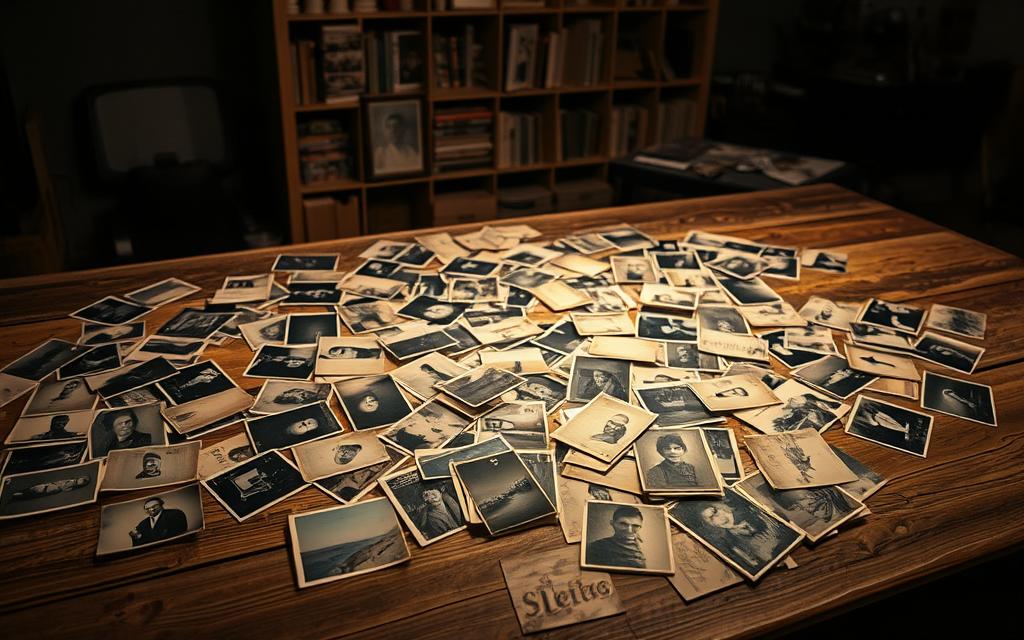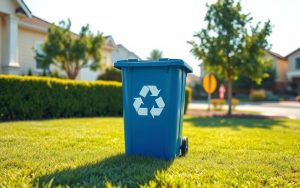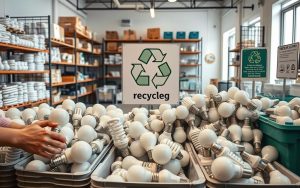Many people assume that photographs can be tossed into the recycling bin like regular paper. Their glossy appearance often leads to this misconception. However, the truth is more complex. Traditional photographs contain chemical coatings from the developing process, making them unsuitable for standard recycling streams.
Modern digital prints differ from their chemically processed counterparts. According to Terry Gellenbeck, these older prints can leave harmful residues in paper recycling systems. To identify recyclable prints, try the “tear test.” If the paper tears cleanly, it’s likely safe to recycle. Layered tears indicate chemical coatings.
Improper disposal of photographs poses environmental risks. Many contain silver, mercury, or plastic, which can harm ecosystems. Instead of tossing them, consider eco-friendly alternatives like donation or creative crafts. For safe disposal, check local recycling capabilities, as regional rules vary.
Spring cleaning often brings up emotional attachments to memories. While it’s hard to part with cherished moments, sustainable choices matter. For those seeking recyclable options, products like HP Everyday Glossy Photo Paper offer a greener alternative.
Are Old Photos Recyclable? The Truth Revealed
Photographs from past decades often carry more than just memories; they contain materials that complicate recycling. Traditional prints, especially those developed in the 19th and 20th centuries, include gelatin, silver halides, and plastic emulsions. These chemicals were essential for image development but now pose challenges for modern recycling systems.
Resin-coated (RC) prints, popular since the 1980s, added another layer of complexity. When torn, these prints reveal visible plastic layers, making them unsuitable for standard paper recycling. Unlike modern digital prints, which use inkjet or laser methods, older prints required chemical baths that leave residues harmful to recycling pulping systems.
Understanding the Composition of Old Photos
Vintage black-and-white prints, for example, often contain silver and mercury, while RC prints have plastic coatings. These materials react to heat, degrading the quality of recycled paper. Terry Gellenbeck, a recycling expert, compares these prints to non-recyclable thermal receipts, emphasizing their disruptive impact.
Why Recycling Old Photos Is Complicated
Chemical residues from older prints can contaminate recycling streams, leading to inefficiencies. Glossy finishes, whether clay-based or plastic-coated, further complicate the process. Wishcycling—placing non-recyclable items in curbside bins—only exacerbates the problem, as many recycling centers lack the technology to handle mixed materials.
| Print Type | Materials | Recyclability |
|---|---|---|
| Vintage Prints | Gelatin, Silver, Mercury | Non-Recyclable |
| RC Prints | Plastic Emulsions | Non-Recyclable |
| Digital Prints | Inkjet/Laser Methods | Recyclable |
For those seeking sustainable alternatives, FSC-certified photo paper offers a greener option. Always check local recycling rules, as policies vary by region. Phoenix, for instance, has specific guidelines for mixed-paper recycling that exclude chemically treated items.
Why Can’t Old Photos Be Recycled?
Chemical coatings in vintage prints make them unfit for standard recycling processes. These prints often contain heavy metals like silver and mercury, which classify them as hazardous waste. Recycling centers lack the technology to safely process these materials, leading to contamination in recycling streams.

Chemical Coatings and Their Impact
Traditional prints, especially those from the 19th and 20th centuries, include gelatin and silver halides. These materials were essential for image development but now pose environmental risks. When mixed with standard paper recycling, they release harmful residues that degrade the quality of recycled materials.
Albumen prints, for example, contain mercury, while resin-coated (RC) prints have plastic layers. These components react poorly to heat, making them unsuitable for recycling. Dental waste recyclers may accept silver-laden photos, but this option is not widely available.
Differences Between Old and Modern Photo Prints
Modern digital prints, like those from pharmacies, use non-chemical methods such as inkjet or laser printing. These prints are safer for recycling because they lack hazardous coatings. A simple tear test can help identify recyclable prints: clean tears indicate digital prints, while layered tears suggest traditional photo paper.
Kodak’s RC prints from the 1980s contrast sharply with Shutterfly’s modern recyclable options. The latter uses eco-friendly materials that align with current recycling standards. However, some premium labs still use chemical processing, so always check before recycling.
| Print Type | Key Materials | Recyclability |
|---|---|---|
| Vintage Prints | Silver, Mercury, Gelatin | Non-Recyclable |
| RC Prints | Plastic Layers | Non-Recyclable |
| Digital Prints | Inkjet/Laser Methods | Recyclable |
Recycling infrastructure also varies by location. Urban centers may have advanced facilities, while rural areas often lack the resources to handle mixed materials. Improper disposal, such as mixing RC prints with office paper, can disrupt recycling systems and harm the environment.
For safe disposal, consult the EPA’s Household Hazardous Waste locator tool. This resource helps identify facilities equipped to handle chemically treated photographs. Making informed choices ensures sustainable practices and minimizes waste.
Eco-Friendly Alternatives to Recycling Old Photos
Finding sustainable ways to handle unwanted prints can make a big difference. Instead of tossing them into the trash, consider options that reduce waste and preserve memories. From donation to creative crafts, there are many ways to give these items a second life.
Donating or Repurposing Old Photos
Donating prints to local historical societies, museums, or art programs can help preserve history. These organizations often welcome contributions for research or exhibits. Artists and craft communities, like those on Etsy, may also find value in unique prints for their projects.
For those with silver-containing prints, dental waste recyclers can safely process these materials. Use resources like Earth911’s database to locate nearby facilities. This ensures proper handling of hazardous components.
Creative Craft Ideas for Unwanted Photos
Turn prints into decorative items like coasters, ornaments, or memory journals. Decoupage techniques can transform them into unique pieces for your home. Shredded prints can even substitute for polystyrene packing material, reducing waste in shipping.
Businesses like Artful Relics specialize in upcycling prints into jewelry or keepsakes. These creative solutions not only declutter but also give new purpose to cherished memories.
Safe Disposal Methods for Non-Recyclable Photos
For prints that can’t be donated or repurposed, proper disposal is key. Avoid burning them, as chemical coatings release toxic fumes. Instead, check with local hazardous waste facilities for safe handling protocols.
Some photo paper, like HP Everyday Glossy, is recyclable. Stores like Staples also offer in-store recycling programs. Always verify local guidelines to ensure compliance with regional rules.
Digitizing backups using Google Photos or encrypted hard drives can reduce physical clutter. For long-term storage, use acid-free albums and climate-controlled spaces to preserve quality.
Conclusion: Making Sustainable Choices With Old Photos
Handling pre-2000s prints responsibly is crucial due to their chemical makeup. Many contain substances like silver and mercury, making them unsuitable for standard recycling. Instead of tossing them, consider donating or repurposing these items to reduce waste and preserve history.
For safe disposal, hazardous waste facilities or silver recyclers can manage these materials properly. When creating new prints, opt for FSC-certified or bamboo-based options to support sustainability. Always verify local recycling rules for modern digital prints to ensure compliance.
Seasonal audits of your collection can help declutter and identify irreplaceable images. Digitizing these ensures long-term preservation while minimizing physical waste. For more tips on eco-friendly disposal, check out this comprehensive guide.
Making informed choices today can protect both memories and the environment for future generations.







